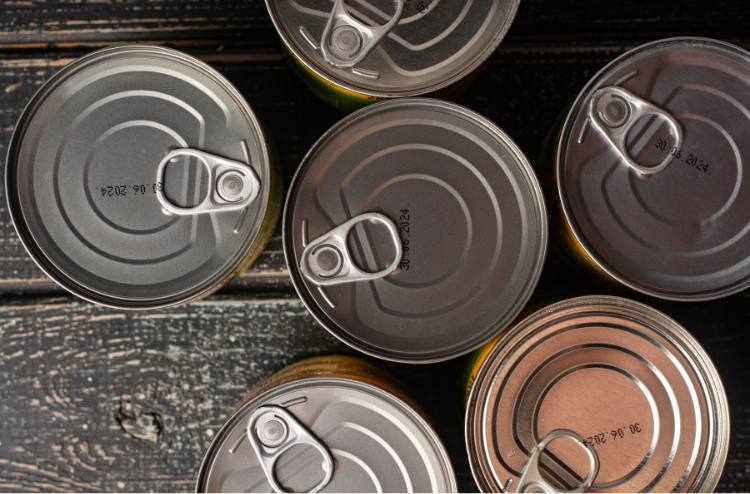
Understanding expiration dates and freshness is crucial when it comes to preparing kiddie meals. Parents are often concerned about providing the best quality food for their children, and knowing how to interpret expiration dates and assess freshness can make a significant difference in maintaining a healthy diet. Here’s an interesting analysis of this topic, covering why it matters, how to properly interpret expiration labels, and tips for ensuring the freshest ingredients in your child’s meals.
Why Expiration Dates and Freshness Matter
The freshness of food directly impacts its nutritional value, taste, and safety. Fresh ingredients are rich in essential vitamins and minerals, which are vital for a child’s growth and development. On the other hand, consuming food past its prime can lead to nutrient loss and potential health risks, such as foodborne illnesses. Understanding expiration dates helps parents avoid these risks, ensuring that the food they serve is both safe and nutritious.
Interpreting Expiration Dates: What They Really Mean
Expiration dates can be confusing, as they come in various forms, such as « Best Before, » « Use By, » and « Sell By. » Here’s what each term generally means:
– « Best Before« : This date indicates when the product will be at its peak quality. After this date, the food may still be safe to eat, but its flavor, texture, or nutritional value might start to decline.
– « Use By« : This is the most important date to pay attention to, especially for perishable items like dairy, meat, and fresh produce. It indicates the last date the product should be consumed for safety reasons.
– « Sell By« : This date is more for retailers than consumers. It indicates how long a product can be displayed for sale. Food is often still safe to eat after the « Sell By » date, but it’s wise to consume it sooner rather than later.
Understanding these labels helps parents make informed decisions about what’s safe to serve their kids and when it’s time to discard food items.
Ensuring Freshness in Kiddie Meals
To provide the freshest meals possible, it’s essential to develop good shopping habits and food storage practices. Here are some tips:
1. Shop Smart: When buying fresh produce, dairy, or meat, check the expiration dates and choose items with the longest shelf life. For fruits and vegetables, look for those that are firm, brightly colored, and free from bruises or blemishes.
2. Proper Storage: Store perishable items like dairy, meat, and fresh produce in the refrigerator immediately after purchase. Use airtight containers to prolong freshness and prevent contamination.
3. Rotate Stock: Use the « first in, first out » method in your fridge and pantry. Place older items at the front so they are used first, reducing the likelihood of food going bad before it’s consumed.
4. Freezing for Longevity: Many foods can be frozen to extend their shelf life. For example, bread, fruits, and even some vegetables can be stored in the freezer and used as needed. Be sure to label items with the date they were frozen to keep track of freshness.
5. Smell and Taste: Beyond expiration dates, trust your senses. If food looks, smells, or tastes off, it’s better to err on the side of caution and discard it.
The Impact of Freshness on Kiddie Meals
Freshness not only affects the nutritional content of food but also its taste and texture. Children are more likely to enjoy and eat their meals if the ingredients are fresh and flavorful. For instance, fresh fruits and vegetables have a natural sweetness and crunch that are appealing to young palates. Similarly, fresh dairy products are creamier and more satisfying. By prioritizing freshness, parents can make mealtime more enjoyable and nutritious for their kids.
Balancing Freshness with Convenience
Balancing freshness with convenience is a common challenge for parents who want to provide nutritious meals for their children while managing busy schedules. Fresh ingredients are undoubtedly the gold standard for flavor and nutrition, but the realities of daily life often require more practical solutions. Here’s an in-depth look at how to achieve this balance, ensuring that your kids enjoy healthy meals without sacrificing convenience.
1- The Role of Frozen and Pre-Packaged Foods
Frozen and pre-packaged foods can be lifesavers for busy parents. While fresh produce is ideal, frozen fruits and vegetables are often just as nutritious. They are typically harvested at peak ripeness and flash-frozen immediately, which locks in vitamins and minerals. This makes them a convenient option for quick meals, such as adding frozen peas to a stir-fry or blending frozen berries into a smoothie.
Similarly, pre-packaged foods like whole-grain pasta, canned beans, or pre-washed salad greens can significantly cut down on meal prep time. The key is to choose options with minimal processing and added ingredients. For instance, opting for plain canned beans over those with added salt or sauces ensures you’re still serving a healthy meal with the convenience of ready-to-use ingredients.
2- Incorporating Freshness into a Busy Routine
While convenience is important, there are ways to incorporate fresh ingredients into your routine without feeling overwhelmed. One approach is to dedicate a specific day for meal prep. For example, spending a couple of hours on the weekend to wash, chop, and portion out fresh vegetables and fruits can save time during the week. You can store these prepped ingredients in airtight containers, ready to be used in various dishes.
Another strategy is to mix fresh and convenient ingredients in a single meal. For example, a quick pasta dish can be made more nutritious by tossing in fresh spinach or cherry tomatoes at the last minute. Similarly, a frozen veggie burger can be served with a fresh salad to add that extra boost of freshness and nutrition.
3- Utilizing Freshness Boosters
Even when using frozen or pre-packaged foods, you can enhance the freshness of a meal by adding fresh herbs, lemon juice, or a drizzle of high-quality olive oil just before serving. These simple additions can elevate the flavor and nutritional value of a dish, making it taste as if it were made entirely from scratch.
For instance, a store-bought soup can be brightened up with a handful of freshly chopped parsley or a squeeze of lemon. Similarly, frozen pizzas can be topped with fresh arugula or basil after baking, giving them a homemade touch.
4- Meal Planning with Freshness in Mind
Planning your meals around what’s fresh and in season can also help strike a balance between convenience and nutrition. Seasonal produce is not only fresher and tastier but often more affordable. Creating a meal plan that incorporates these ingredients can reduce the need for last-minute grocery trips and ensure that your family is eating a variety of nutritious foods.
For example, during summer, you might plan meals that feature fresh tomatoes, zucchini, and berries, while winter meals could focus on root vegetables, citrus fruits, and leafy greens. By basing your meals on what’s in season, you make the most of fresh ingredients while still allowing room for convenience items when needed.
5-Embracing Make-Ahead Meals
Make-ahead meals are another excellent way to balance freshness with convenience. Dishes like casseroles, soups, and stews can be prepared in large batches and stored in the refrigerator or freezer for later use. These meals often taste even better after a day or two as the flavors meld together, and they can be quickly reheated for a nutritious, fresh-tasting dinner.
For example, a big pot of vegetable soup made on Sunday can be portioned out for quick lunches or dinners throughout the week. By incorporating a variety of fresh vegetables and herbs, you maintain nutritional quality while benefiting from the convenience of a ready-to-eat meal.
5- A Harmonious Approach
Balancing freshness with convenience doesn’t have to be an all-or-nothing endeavor. By combining fresh ingredients with smart use of frozen and pre-packaged options, you can provide your kids with wholesome, satisfying meals that are both nutritious and easy to prepare. Whether through meal planning, make-ahead dishes, or simply adding a fresh touch to a convenience food, there are countless ways to achieve this balance, ensuring that mealtime remains both manageable and healthy.
Prioritizing Freshness for Healthier Kiddie Meals
Understanding expiration dates and ensuring the freshness of ingredients is a key aspect of preparing healthy, delicious meals for children. By staying informed about what these dates mean and practicing good food storage habits, parents can provide meals that not only meet nutritional needs but also satisfy young taste buds. Prioritizing freshness contributes to the overall well-being of children, making it a cornerstone of effective meal planning.

